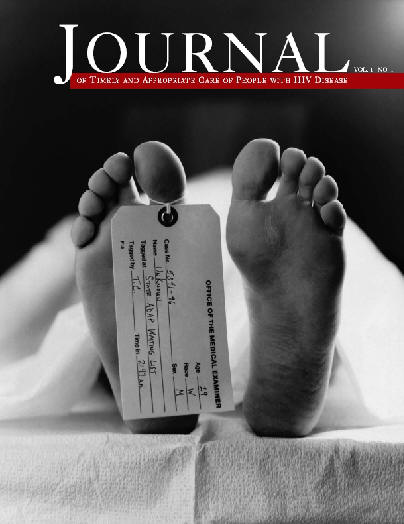|
At a point in time in 1999, there were 3 people living
in different parts of the United States.
Their demographics looked something like this:
Black female, 57,
Florida, HIV+
Black male, 31, New York, HIV+
Black male, 29, North Carolina, HIV+
On first glance, there are two factors that are the same
for all three people: race
and HIV status. These demographics are not surprising when you take into
account
that African Americans make up more than 54% of those infected with
HIV/AIDS in
America. In the respective states of the three people above, 48% of
HIV-infected
people in Florida in 2000 were African American, 42% in New York, and
more than 72%
in North Carolina.
These three people are representative of the
disproportionate impact HIV has
on the African-American community. Another factor shared by at least two
of the three people listed above is gender. Once again, we see a
representation
of how HIV is affecting communities of color. In many parts of our
country, the ratio
between men and women infected with HIV is beginning to mirror the 2:1
example above.
This information is old hat for many in the HIV field.
Check any Web site or periodical
published by the Centers for Disease Control and Prevention and you will
see the
disproportionate impact HIV infection is having on the African-American
community.
Furthermore, visit any state Web site that houses
epidemiologic data and you will find the
same thing. Finally, if you are the type that needs to see real people
as opposed to numbers,
visit a local AIDS Service Organization and ask about their client
rolls.
That HIV disproportionately affects African Americans is
but one side of the story. There is
another side: one that addresses the question of “How?” In the
African-American community
HIV affects not only individuals but entire families. It is not uncommon
to hear about multiple
cases of HIV infection in one family.
In fact, the three people used as examples above are
from one family: a mother and two of her
three sons. How could something like this happen? It wasn’t because of
family drug use or
familial promiscuity. It wasn’t because the infected family members
weren’t aware of HIV prior
to their infection. The reasons these three family members became
infected with HIV are as
complicated as the virus itself.
I had the fortune of growing up in a wonderful
family—one rich with love and a strong connection
to family. We were extremely close and we could talk about anything with
one another, so long as
that anything didn’t involve sex or sexuality. Those were not topics
that a good Christian family
discussed around the dinner table. We never discussed the risks
that are associated with sex, such
as pregnancy or sexually transmitted diseases.
The inability or unwillingness to talk about sex or
sexuality is common in many families. In fact, the
average American family doesn’t talk about these subjects. My family
didn’t, and likely as a result,
two of three brothers are HIV positive and we lost our mother to AIDS.
Even after the tragedy we
have suffered at the hands of HIV, we still don’t talk about it. We live
in denial despite the reality of
disease and death. Not a month goes by without my father asking me about
grandchildren. He has
known about my HIV status since 2000, about my sexuality since 1998. Yet
desire for normalcy, or
what he considers to be normal, forces him to ask the question, while
fear and denial keep him from
asking about the impact HIV has on my health.
We were middle class, well educated, didn’t use drugs,
came from a loving and supportive family, but
we didn’t talk about the things that are important to sustaining life.
We made the mistake that many
African-American families make; we thought that it couldn’t happen to
us. It did happen and the “how”
is because we chose to ignore the possibility that it could. Who
is to blame? I don’t know the answer,
but we all bear the responsibility of speaking up now.
Silence is deadly. It reinforces stigma, encourages
discrimination, and is fueled by fear. In my family, silence
increased our exposure to HIV. In other families, it manifests itself in
different ways that often become
cyclical, getting passed from generation to generation: child abuse,
alcoholism, racism, and mental illness. It
is the true silent killer in the African-American community. How do we
respond? We must all discuss sex and
sexuality, which means we must all talk about difficult issues, such as
HIV. We must discuss the importance
of making healthy choices. We must break the silence. |

